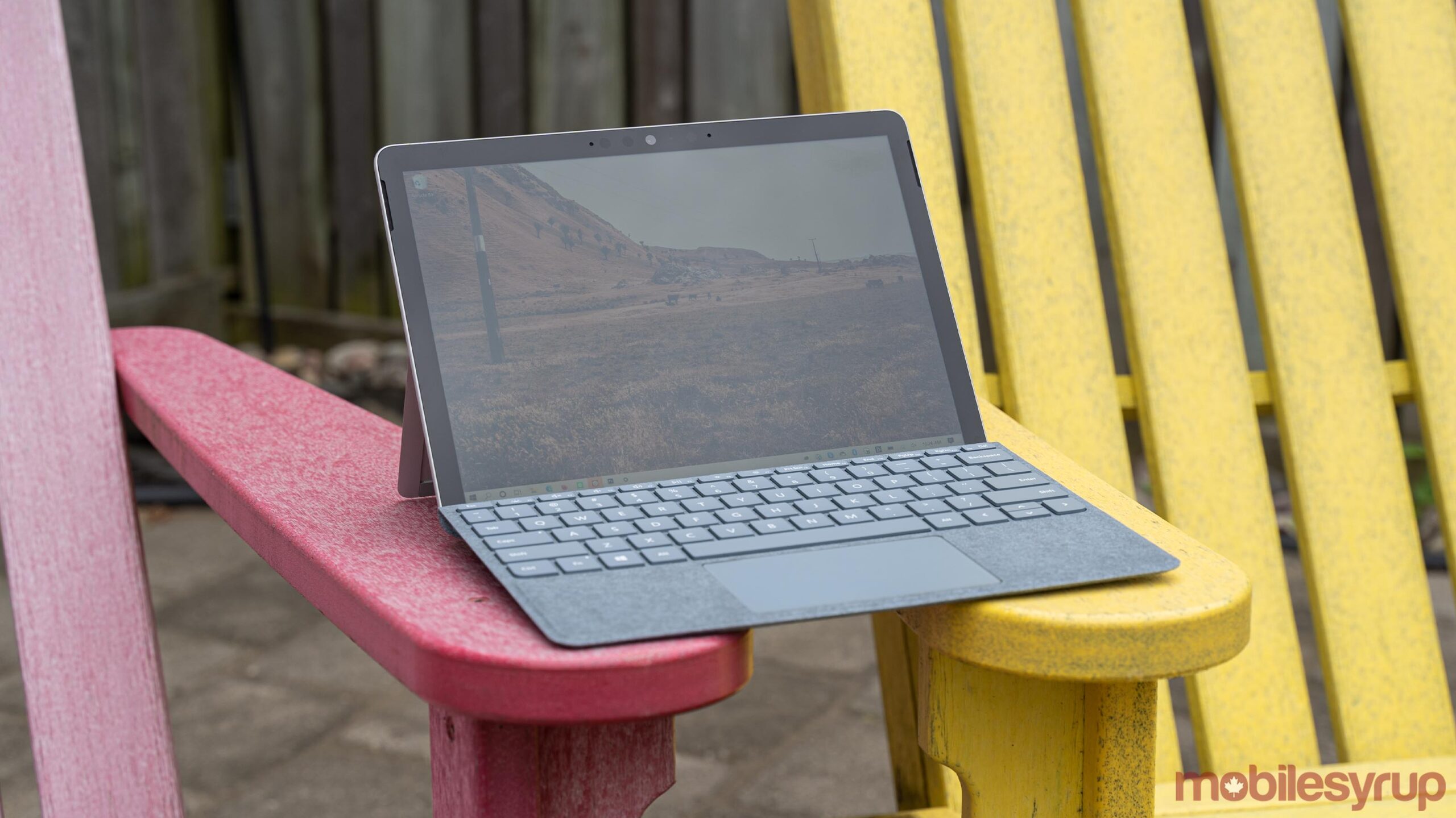
The Pros
- Excellent build quality
- Ultra portable size
- Great standby time
The Cons
- Pricey when you consider accessories
- Type Cover makes for cramped typing
- Would like to see an ARM version
Let’s start with the elephant in the room: the Surface Go 2 isn’t for me.
That’s not to say that the Surface Go 2 is a bad device. Far from it. I quite enjoyed using Microsoft’s newest mini-Surface 2-in-1. It’s light, small, easy to carry around (although in the days of COVID-19, I don’t have many places to carry it to).
My issues stem more from my perception of what a Windows device should be and do. When I use a computer running Windows, it’s to get something done, or to play a game. The point is that I need a level of power to accomplish what I want to do on Windows, whether that’s work or entertainment.
The Surface Go 2 doesn’t fit into that niche, but that doesn’t mean it has no place in Microsoft’s lineup. Not everyone is like me, and the Go 2 could be the Surface for you if you can look past the cost.
Specs
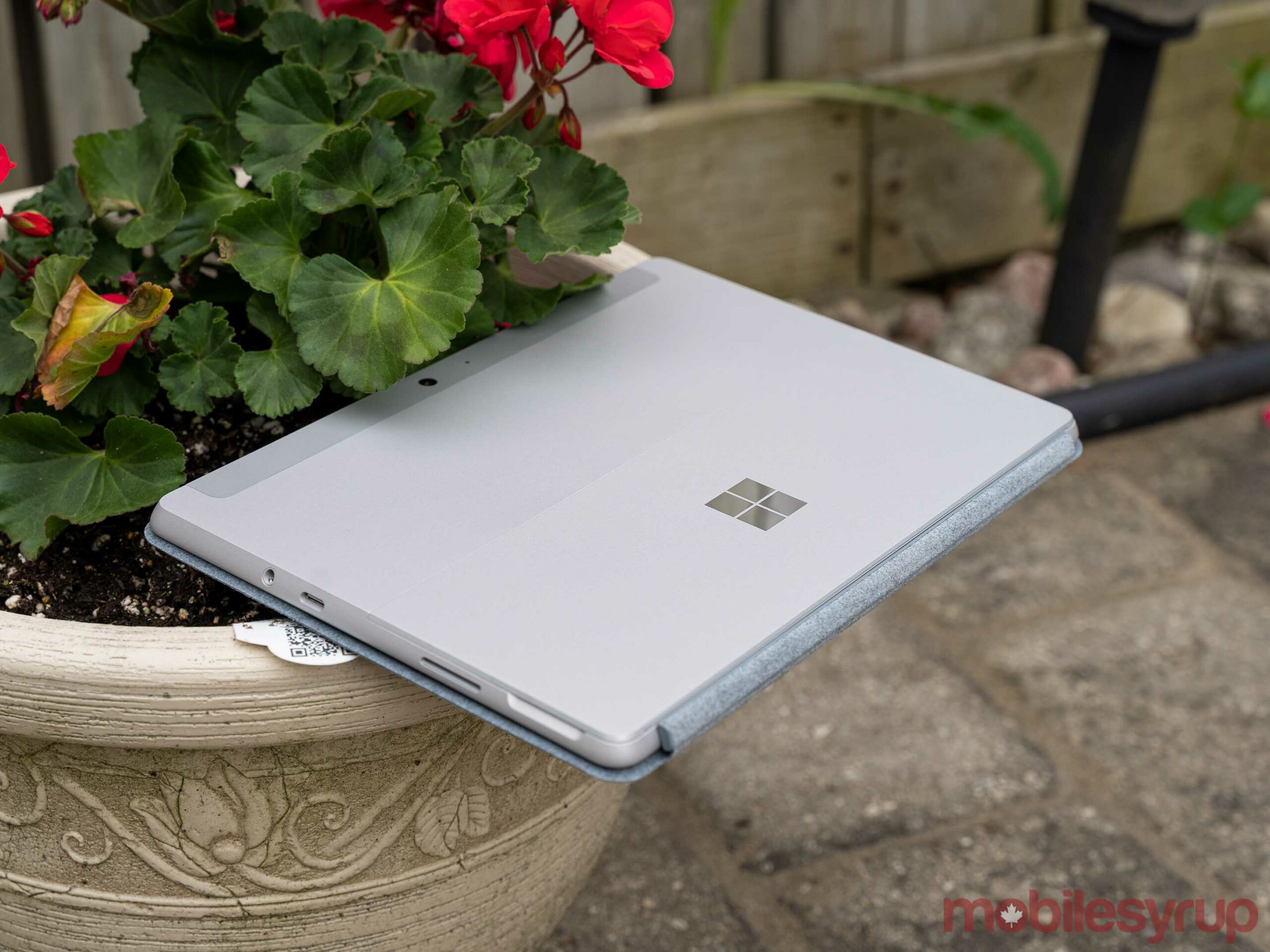
- Display: 10.5-inch PixelSense Display, 1920 x 1080 pixel resolution, 3:2 aspect ratio, 1500:1 contrast ratio
- Processor: Intel Pentium Gold 4425Y or 8th Gen Intel Core m3
- Memory: 4GB or 8GB of RAM
- Storage: 64GB eMMC drive or 128GB SSD
- Dimensions: 245 mm x 175 mm x 8.3 mm
- Weight: Wi-Fi: 544.3 g (1.2 lb), LTE Advanced: 553.4 g (1.22 lb)
- Camera: 5-megapixel, 1080p front camera with Windows Hello and 8-megapixel rear camera with 1080p video
- Operating System: Windows 10 in S mode (upgradable to regular Windows 10 for free)
- Battery: Up to 10 hours of typical device usage
- Connectivity: Wi-Fi 6, Bluetooth 5.0, LTE Advanced with Snapdragon X16 modem
- Sensors: Ambient light sensor, accelerometer, gyroscope, magnetometer and NFC
- Ports: 1x USB-C, 3.5mm headphone jack, 1x Surface Connect port, microSDXC card reader
- Graphics: Intel UHD Graphics 615
You’ve seen this before
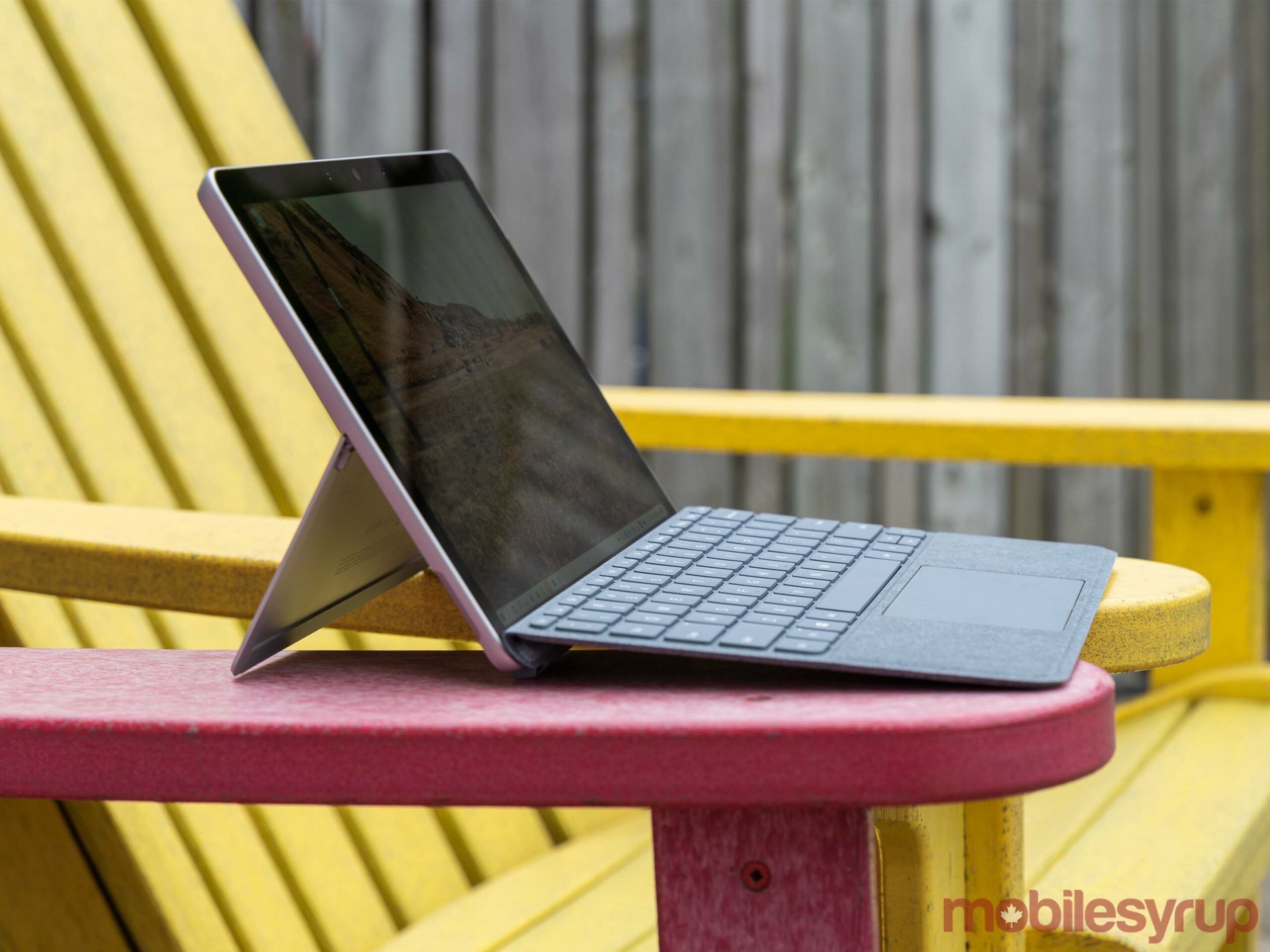
Microsoft did not rewrite the rulebook with the Surface Go 2. It is a Surface through and through, from every angle, port and hinge. While the Surface Go 2 isn’t significantly different in looks from its predecessor, it does offer some small refinements.
Namely, Microsoft eked out a slightly larger 10.5-inch display by slimming the bezels. It’s a definite improvement but the bezels are still quite thick and, depending on what you’re doing with the Go 2, it can still feel cramped.
Further, the Surface Go 2 is remarkably light and thin. I’d have no problem tossing it in a backpack and carrying it around. As I said up top, the Go 2 doesn’t offer quite as much power as I would like, but when I was a student this would have been a great companion device.
When I was on campus, I needed something to take notes and occupy my downtime between classes. At the time I had a custom-built PC — obviously, I couldn’t carry it around campus, but it was great for tackling bigger projects — and an ancient Dell laptop that felt about as heavy. My solution at the time was a Bluetooth keyboard I connected to my phone to take notes. The Surface Go 2 would have been perfect in that situation.
Ultimately, I think that’s where the Surface Go 2 excels. The design doesn’t wow you in any meaningful way, but it does a great job of miniaturizing the Surface experience so it’s ultra-portable in ways even the outstandingly portable Surface Pro line fails to be. Another part of this is the charging cable, which itself is a lighter version of the one included with the Surface Pro, which makes it easier to haul around.
Powerful it is not
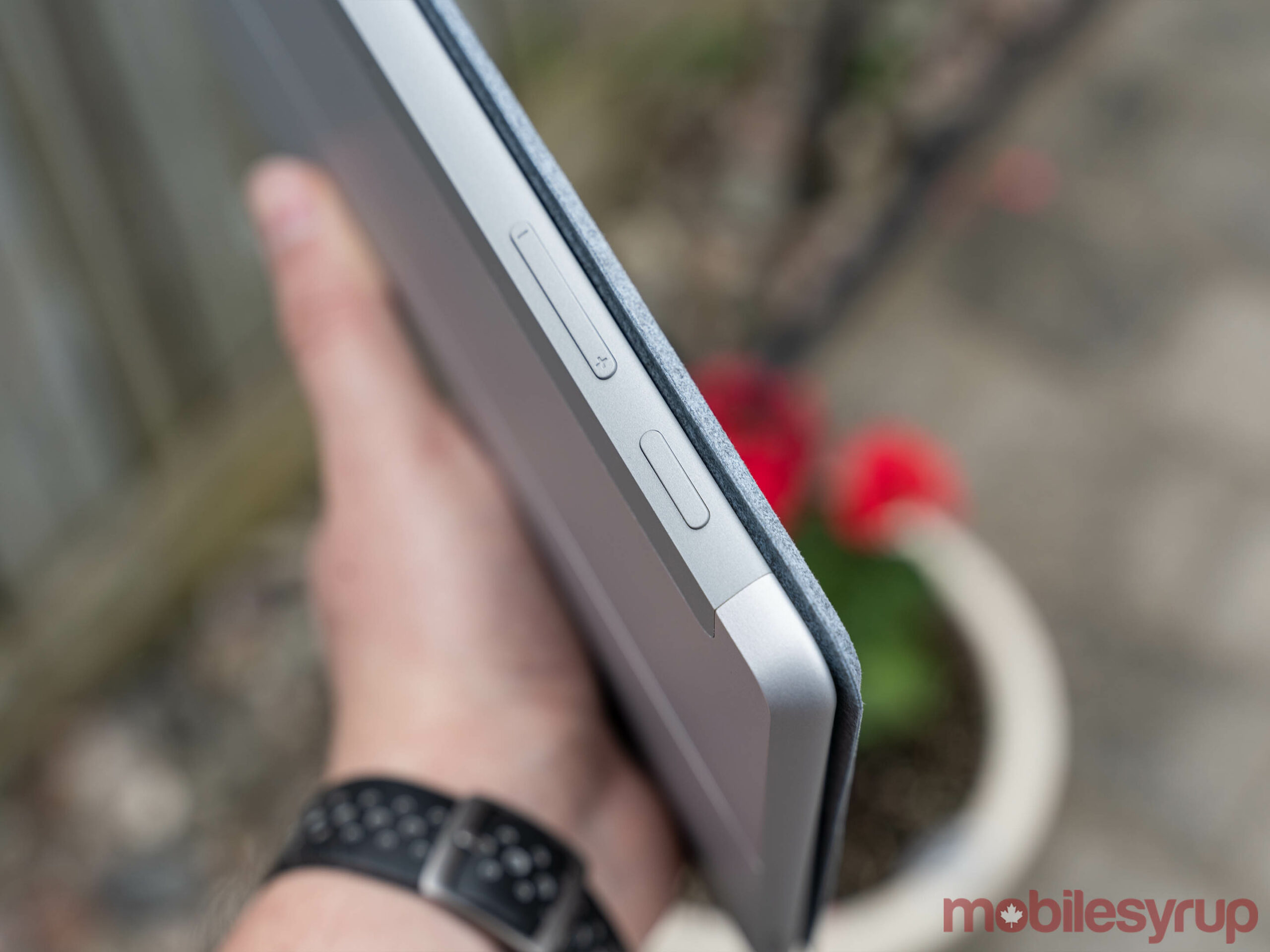
If I haven’t hammered this point in yet, here it is one more time: the Surface Go 2 is not a powerhouse.
Microsoft sent me the Pentium 4425Y model with 8GB of RAM to review, so my expectations weren’t high to begin with, but it really surprised me how slow it felt. To be fair, I don’t have anything equally low-end to compare it to. However, going from my ageing desktop with an i5-6500 to the Go 2 felt like slamming on the brakes.
At the same time, the Surface Go 2 handled itself remarkably well for various light tasks. Browsing the internet, social media, watching videos and stuff like that all worked fine, even if I had to wait an extra few seconds for the content to appear on my screen.
For the most part, I kept my Surface Go 2 usage light. Probably the most difficult task I put it through was writing this review which, aside from the keyboard (more on that below) was rather smooth.
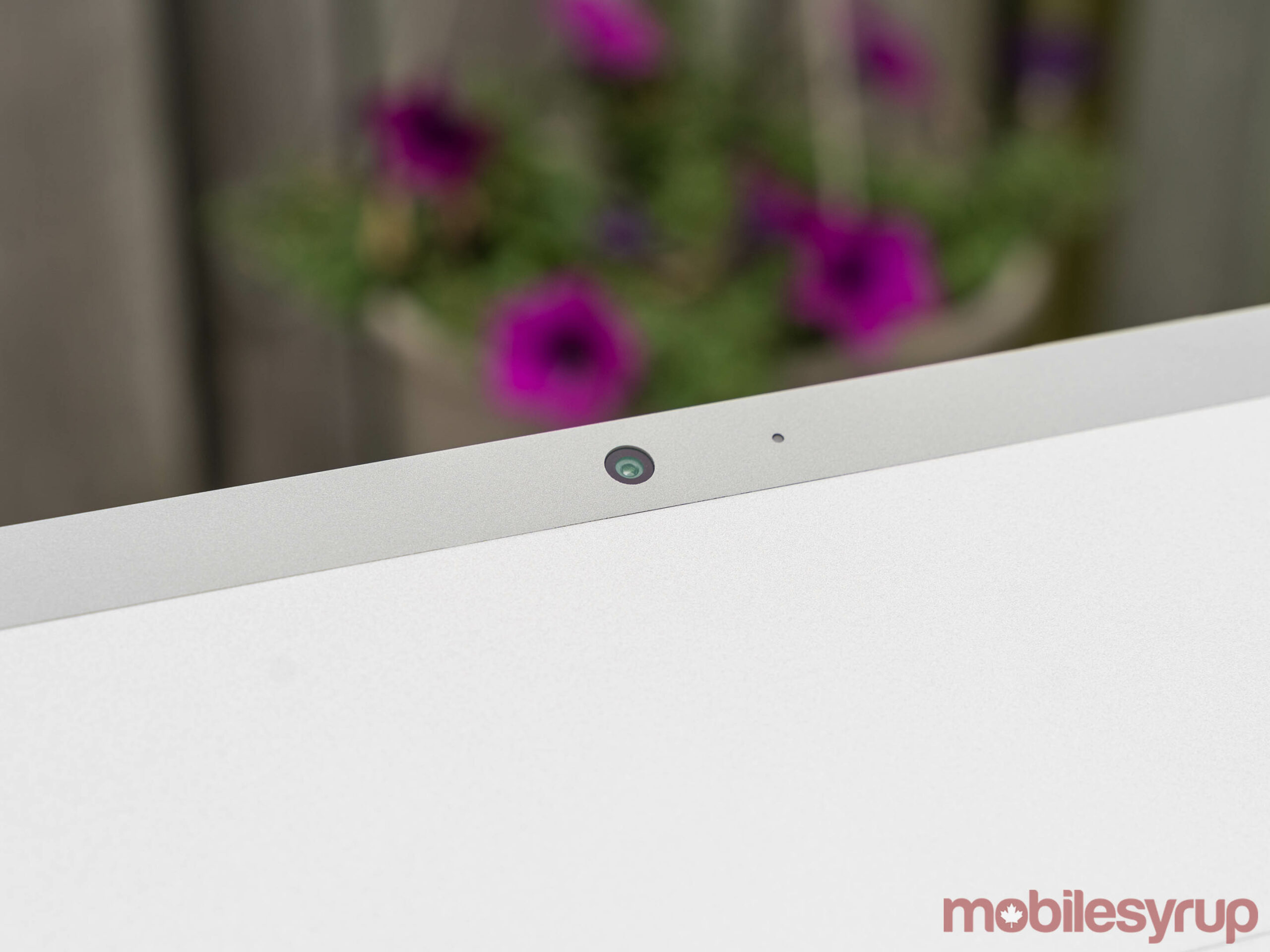
In Google Docs, there were moments where my typing got ahead of what was on screen and I’d have to pause for a moment to let it catch up. When switching tasks, I often waited a few seconds for things to catch up. However, it was able to get the job done.
Photo editing, on the other hand, was an exercise in suffering. Photoshop was sluggish on the Surface Go 2, and Adobe clearly didn’t design the interface to work on a screen this small. Everything felt cramped and too small, with the exception of the Camera Raw app. Its interface was so large I couldn’t fit the whole thing on Surface Go 2 screen, or shrink it enough to make it fit.
Ultimately, temper your expectations with the Surface Go 2. While the higher-end Core m3 model may fare better, I doubt it will be significantly faster than the Pentium. If you use the Go 2 for light web browsing, productivity and multimedia, you’ll likely have few problems with it. If you use your PC for heavier tasks like photo editing, the Surface Go 2 isn’t for you.
Can’t help but wonder why it wasn’t ARM

While Intel’s Pentium handles fairly well, I found myself wondering why Microsoft hadn’t opted for an ARM processor of some kind in the Surface Go 2.
Not only are ARM CPUs better suited for small, ultra-portable devices like the Surface Go 2, but Microsoft has also proven the efficacy of ARM on Windows.
Last year’s Surface Pro X was one of the most exciting launches for the company because it returned to ARM and, despite some early teething issues, showed that Windows 10 can perform well on the platform.
The biggest issue with the Surface Pro X was a lack of compatibility with some x86 apps. Further, those that did work often didn’t work well due to emulation. While definitely a concern, I feel it’s less so on a device like the Surface Go 2 which comes running Windows 10 in S Mode and arguably doesn’t have the power to make the most of the x86 apps that ARM would struggle with.
First, let’s tackle S mode. A Microsoft representative told me the Surface Go 2 wouldn’t come running S mode by default, but that wasn’t the case on my review unit. For those unfamiliar with S mode, it’s a more locked-down Windows 10. Out of the box, it can only run apps from the Microsoft Store and can only browse the web with Microsoft’s Edge browser — egregiously, the Surface Go 2 didn’t even offer me the new Chromium-based Edge out of the box.
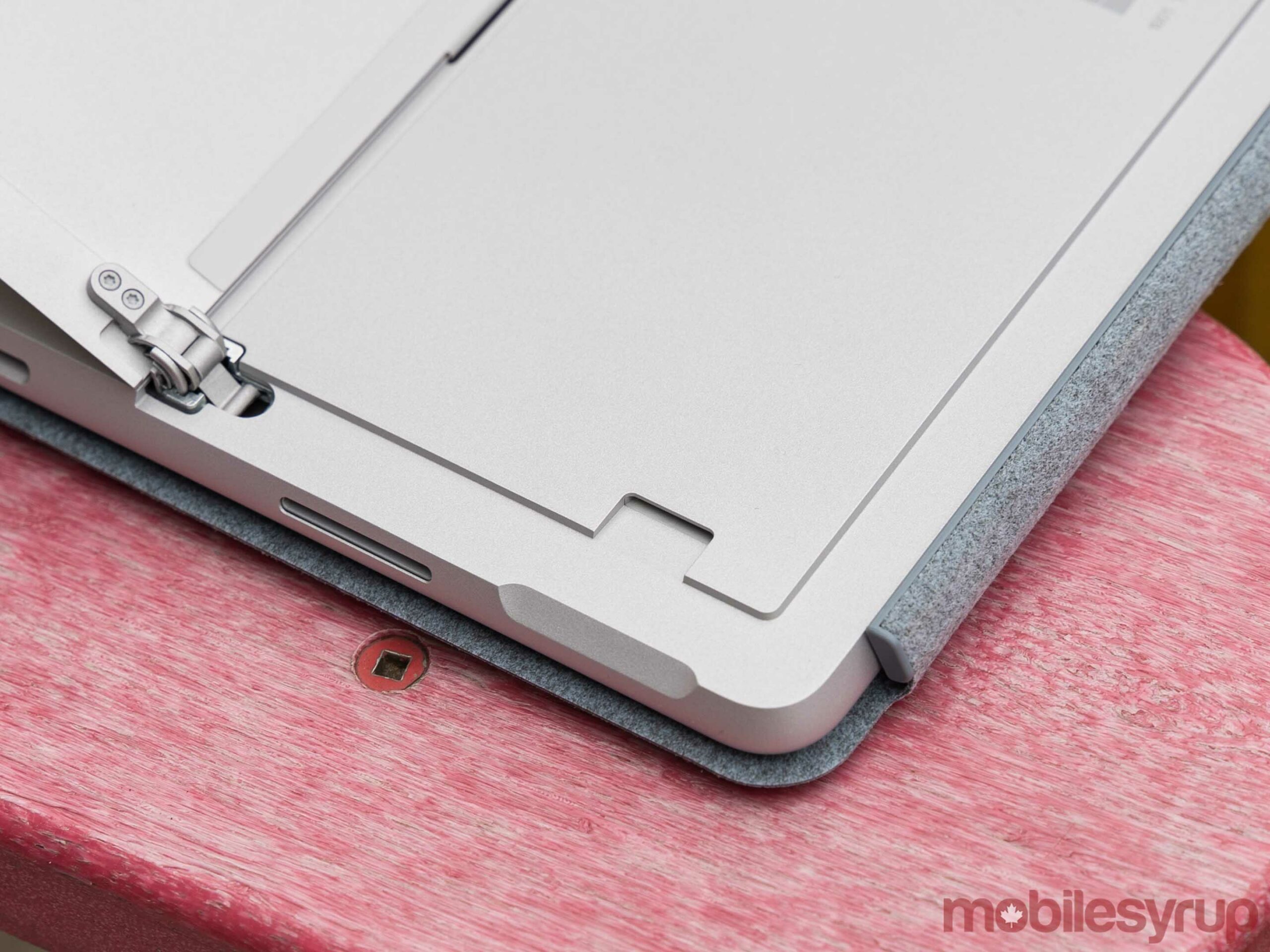
Microsoft bills S mode as a more secure version of Windows since you can’t install stuff that Microsoft hasn’t vetted for safety. While it could be great for the less tech-savvy or for kids you want to protect, it’s definitely not for everyone.
Thankfully, S mode takes all of two minutes to remove. The first time I tried to install something from the web, Windows 10 gave me a warning about S mode and sent me to the Microsoft Store where I could leave S mode with the click of a button.
As for the x86 apps, most of them work fine but expect there to be some issues. Apps like Photoshop just aren’t made for screens this small and performance is mixed on these low-power processors.
The other big culprits are third-party browsers, specifically Chrome. Firefox has a version for ARM, which worked okay when I tested it on the Pro X, but it wasn’t great. Microsoft’s new Edge browser, however, worked great on ARM.
All this is to say that, at least to me, an ARM option in the Surface Go 2 would have made much more sense. Microsoft wouldn’t even need to fit its custom SQ1 processor into the Go 2 — Qualcomm’s own Snapdragon compute platform has several system-on-a-chip (SoC) options that would fit well into the Go 2 budget and likely offer appropriate performance, battery life and more.
It’s mostly speculation, but I’d imagine an ARM-powered Surface Go would at worse be less performant than an Intel-powered equivalent, and at best elevate the experience with better performance and battery life.
Tiny keys
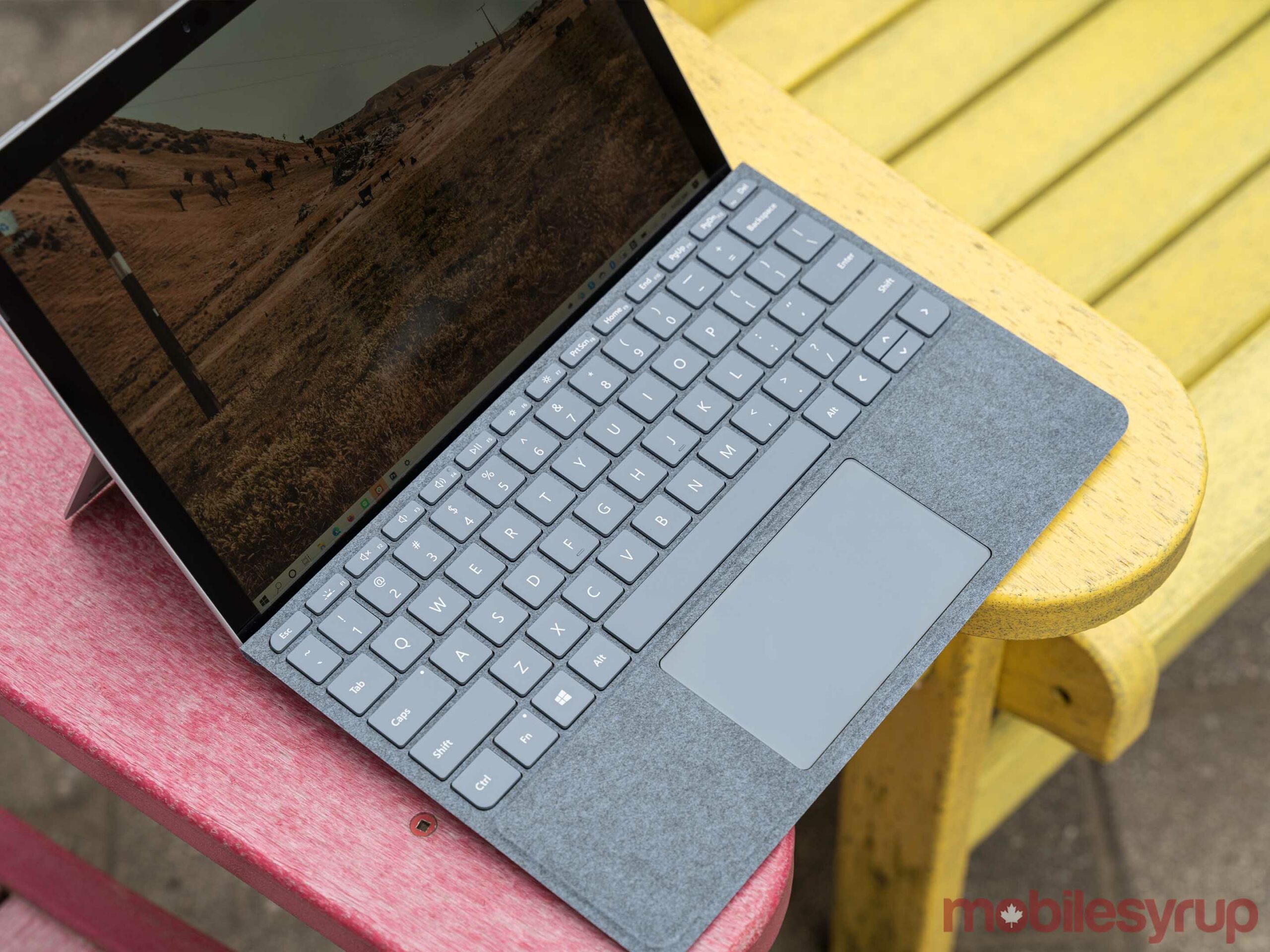
The Surface Go 2’s keyboard is difficult to judge. On the one hand, I find it far too small and in general, typing is more difficult on it than other devices I’ve tried, like the Surface Pro 7. However, I’m also impressed by just how good the typing experience is for a device with such a tiny keyboard.
First, let’s get the obvious out of the way. It’s a Surface keyboard, so that means typing on your lap is more difficult than with a traditional laptop. Interestingly, I found the Go 2 handled lap typing much better than other Surface devices, possibly because the smaller size makes it less top-heavy. Despite this, it still bounced around on my lap.
Typing on a desk was much better, but I found the keyboard cramped. I typed the entirety of this review on the Surface Go 2, which was a test in patience and how robust auto-correct has become. Perhaps given enough time I could grow used to the size of the keyboard, but as is, I find I often overreach the keys I want to hit.
Suffice it to say, if you plan on doing a lot of typing, you may want to consider a bigger Surface model, or perhaps skipping the Type Cover entirely in favour of a larger Bluetooth keyboard for use when you really want to type.
Even more aggravating is that the Type Cover remains unbundled with the Surface Go 2, which makes the Go 2 seem deceptively cheap. The base model costs $529 and you’ll shell out at least $129 for the Type Cover, which puts the Surface Go 2 at almost $660 before tax.
Battery Life
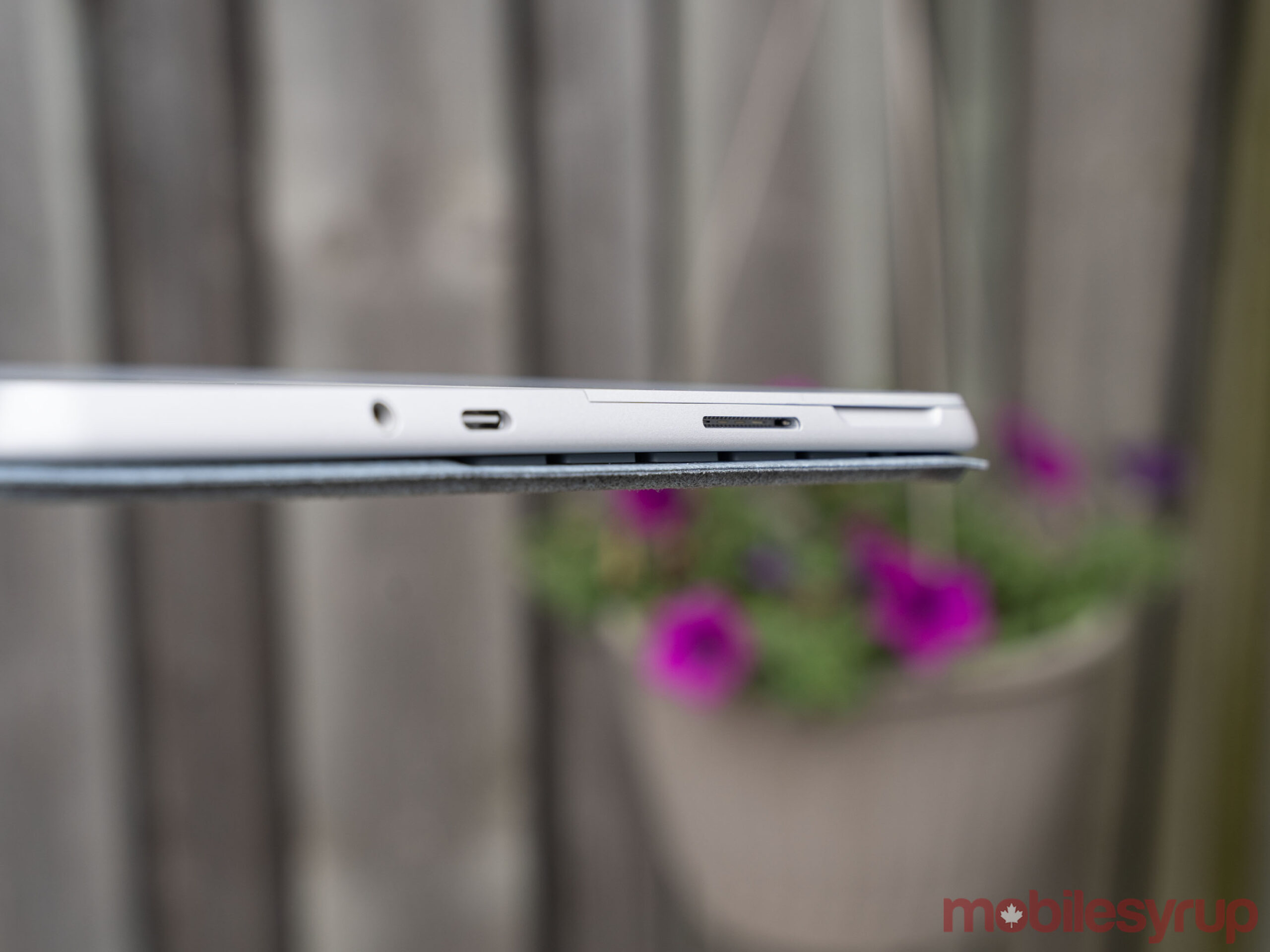
Throughout my time with the Surface Go 2, I was impressed by its standby time. Unlike many other laptops I’ve used, I was able to close up the Surface Go 2 and leave it off the charger and unattended for days without worry it’d die. In my experience, most laptops, including the Surface ones, would struggle to make it more than two days in a similar state.
While standby time certainly impressed, battery life during typical usage was less impressive. Microsoft advertises 10 hours of “typical device usage.” In my own testing, I never cracked the five-hour mark and often got considerably less, depending on how hard I pushed the Go 2.
To be frank, I never expected the Go 2 to offer incredible battery life, but the standby time definitely is a point in the device’s favour. Being able to leave it off the charger and freely use it as I need without worry about the battery was a nice convenience.
Identity crisis
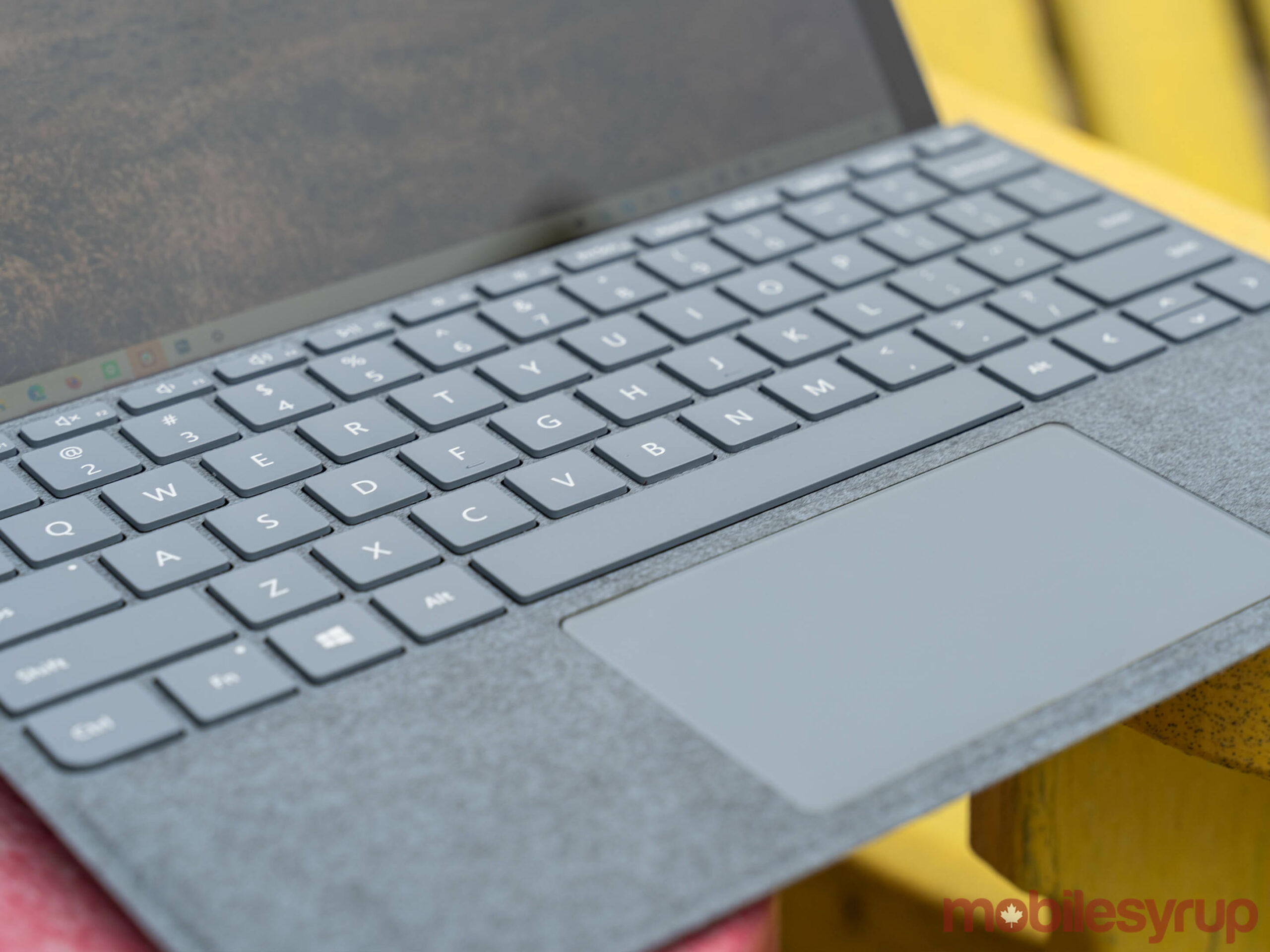
Ultimately, I feel like the Surface Go 2 has an identity crisis. On the one hand, Microsoft bills it as a great, portable computer for students or kids. The Go 2 definitely works in those scenarios, but I’m not sure it makes the most sense.
For example, the price of a Surface Go 2 would rule it out as a device for kids in my mind, while at a student level I feel like something with a bit more power would make the most sense.
Additionally, the Surface Go 2 seems to be a portable, low-power secondary option to a desktop PC. In my time with it, that’s how I found the Go 2 worked best for me. However, that niche segment isn’t something I’d find myself spending over $600 on, especially when so many low-cost tablet alternatives exist to fill the same role.
Throughout the review, I found myself struggling to find reasons to pick up the Surface Go 2. I think that’s the root of the issue for me. In almost every situation I needed a computer, I found I either needed something more powerful, like a desktop, or much more versatile, like a phone. It was rare that I needed both less power than my PC and more screen than what my phone provided.
High price for niche product
That said, the Surface Go 2 isn’t bad -- it’s just not for me. My concern is that it also doesn’t work for others. The Go 2’s biggest argument is that it runs full Windows, but at this power level I think the benefits of that claim are few. The people who actually need to run full-fledged Windows 10 likely need something more than what the Go 2 offers. And the people who don’t will find lower-cost alternatives powered by Chrome OS, or even Apple’s $429 iPad, more than sufficient.
Considering you can now use a mouse with iPadOS and a Bluetooth keyboard accessory will likely cost about the same or less than a Type Cover, the iPad could be a more powerful and cheaper substitute for the Go 2.
However, if Chrome OS or iPadOS won’t work for you and you need a small, ultra-portable Windows computer, the Surface Go 2 is an excellent option.
"The Surface Go 2 is an excellent device, it just isn't for me. And with its higher price, I worry it may not be for you either"
MobileSyrup may earn a commission from purchases made via our links, which helps fund the journalism we provide free on our website. These links do not influence our editorial content. Support us here.


